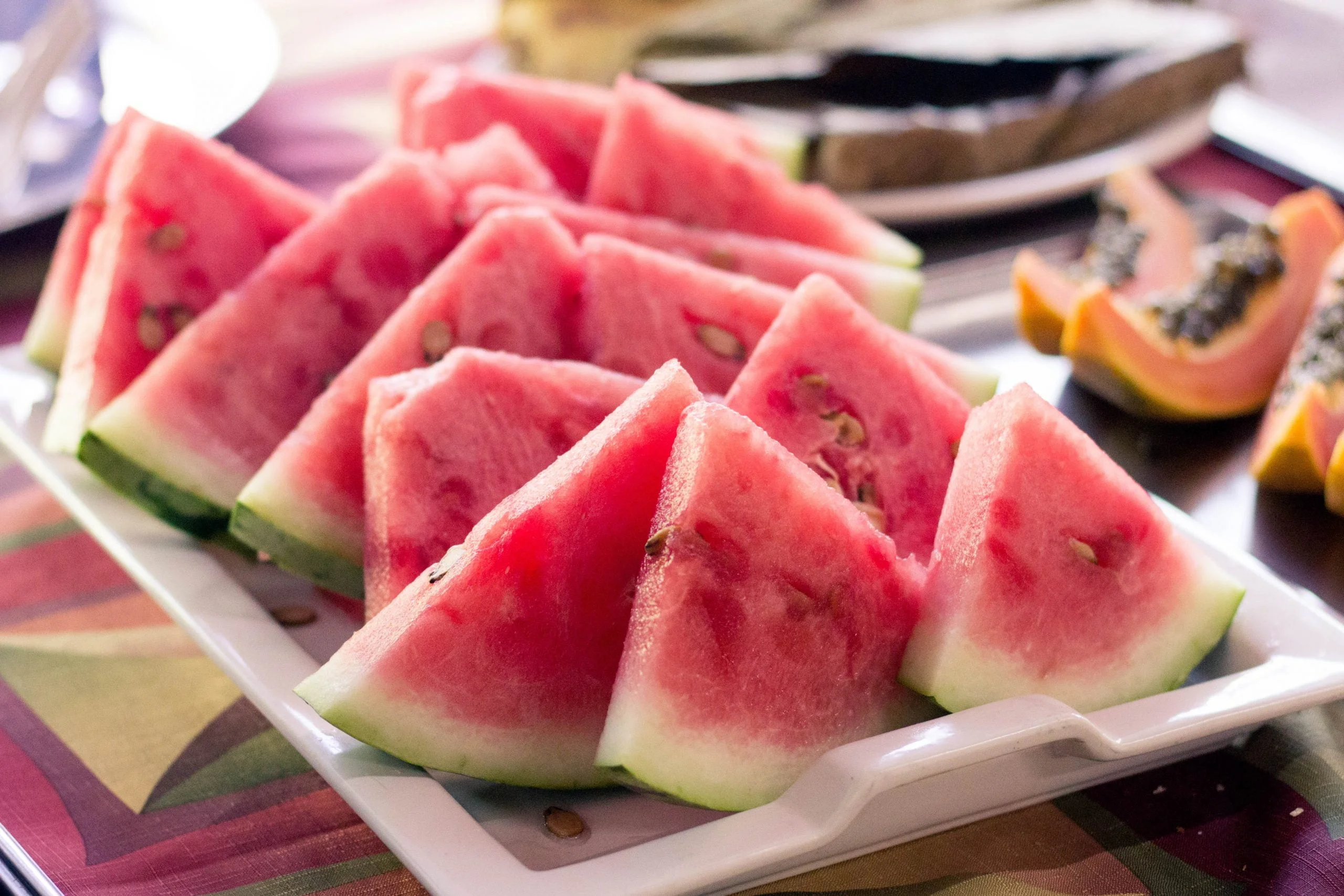Prepared by: Kathleen Trotter, MSc, CanFit PTS, CSN, R.H.N. | kathleentrotter.com
Most of us know that staying hydrated is important, yet too many of us don’t make it a conscious priority. By default, staying hydrated becomes relegated to a “when I think about it” health habit vs the “non-negotiable” that it actually is.
Appropriate water consumption wards off dehydration — think fatigue, muscle cramps, low blood pressure, rapid heart rate, and even organ failure — and facilitates a litany of positives including mental and physical alertness and optimal energy and tissues repair, not to mention a sense of fullness that helps one say “no thank you” to tempting treats.
The body is roughly 60% water. The brain is over 70% water. The body can’t survive — let alone thrive — without water.
How much water do you need? The general recommendation is roughly 12 cups per day depending on thirst, activity levels, temperature, etc. Don’t worry — these cups don’t have to all come from water. You can easily make your quota with a combo of water and hydrating foods such as watermelon, soups, and vegetables. (If you are curious if you are meeting your quota, check your urine. It should be pale yellow. Swap your coffee for a big glass of water if resembles yellow food dye.)
The conundrum is that, for most of us, when it comes to health, knowing and doing are two different things. To paraphrase Derek Sivers, if knowledge were the answer we would all be millionaires with six-pack abs. Knowledge is only half the puzzle — the other key half is developing the inner dialogue and personalized plan to implement said knowledge.
Three steps to optimal hydration
1. “Eat” your water. Consume yummy hydrating foods
Top hydrating foods include watermelon, cucumber, strawberries, banana, spinach, iceberg lettuce, radishes, soups, tomatoes, celery, zucchini, and cauliflower.
Ways to incorporate hydrating foods
- Add watermelon or strawberries to your salads. (Mint, feta, and watermelon is a delicious combo. I also love spinach, walnuts, and strawberries.)
- Instead of pasta try “zucchini pasta” covered in a sauce rich in hydrating foods like tomatoes and spinach.
- Instead of rice, try cauliflower rice.
- Prepare big batches of yummy hydrating soups. Pack them with nutritious and hydrating foods such as tomatoes, spinach, and celery. The vegetables plus the stock add a powerful hydrating punch. As an added bonus, soups are convenient to freeze and consume in the future — I highly recommend making healthy choices convenient.
- Make one meal a day a “meal salad.” I love a “hot/cold” salad as a main meal — the heat makes it feel more satisfying. Try a base of lettuce, tomatoes, cucumber, etc. and then top with steamed spinach or grilled vegetables and a beautiful piece of fish — yummy, hydrating, and satisfying.
- Replace ice-cream with blended frozen banana “ice-cream.”
- Snack on celery and radishes — vegetables are hydrating and the crunch is satisfying.
2. Create a positive inner dialogue based on your “why”
Figure out your “why” — i.e. why hydration is important to you. Knowing your “why” is key for long-term motivation and adherence. When you want to abandon your goals use your “why” as self-talk to keep you on your path. Maybe your “why” is to increase energy and focus, improve digestion, or experience fewer muscle cramps. A personal motivational Kathleen-to-Kathleen chat goes like this: “Kathleen, you know working out makes you feel amazing, and you know you have a better workout when you are hydrated, so chop those vegetables and drink that water NOW.”
3. Set up systems
It is easy to be motivated as you read an article about why hydration is critical. The key to health success is to set up systems to save yourself from your future, less motivated self. “Hoping yourself” to improved hydration is a recipe for failure.
Examples of systems
- Make a rule: You are allowed your morning coffee, lunch, or dinner, etc. only after a big glass of water. Or, you need to consume one glass of water between any alcoholic drinks.
- Set “reminder to drink” alarms.
- Carry around a water bottle.
- Don’t like water? Make it enjoyable by adding hydrating foods (strawberries, cucumber, etc.).
Other considerations
When training outside (especially intensely or for long periods) go INTO the workout well hydrated and consider consulting your doctor or local holistic nutritionist. You might require a sports drink that includes sodium to prevent hyponatremia — swelling in the brain caused by a lack of sodium. Don’t love chemical-filled sports drinks? Talk to your holistic nutritionist to learn recipes for homemade variations using water, juice, and salt.
Main take-away
Frame hydration as a “non-negotiable” and set yourself up for hydration success — figure out your “why” and work to create systems that will make staying hydrated a reality rather than a wish!
-Originally Posted March 2019-
Kathleen Trotter, MSc, is a holistic nutrition professional, fitness expert, media personality, personal trainer, writer, and author of Finding Your Fit and Your Fittest Future Self. Making Choices Today for a Happier, Healthier, Fitter Future You. Kathleen has been a personal trainer and fitness since 2000. Kathleen currently writes for publications including the Huffington Post, has a regular monthly segment on BT Montreal, makes frequent media appearances on other television shows, including Rogers Ottawa, BT Toronto, and CHCH Hamilton, as well as on podcasts such as The Tonic Show Podcast for Zoomer Radio, 40+ Fitness, Naturally Savvy, Fit Chicks Chat, and The Other F Word Podcast. Learn more about Kathleen here.
